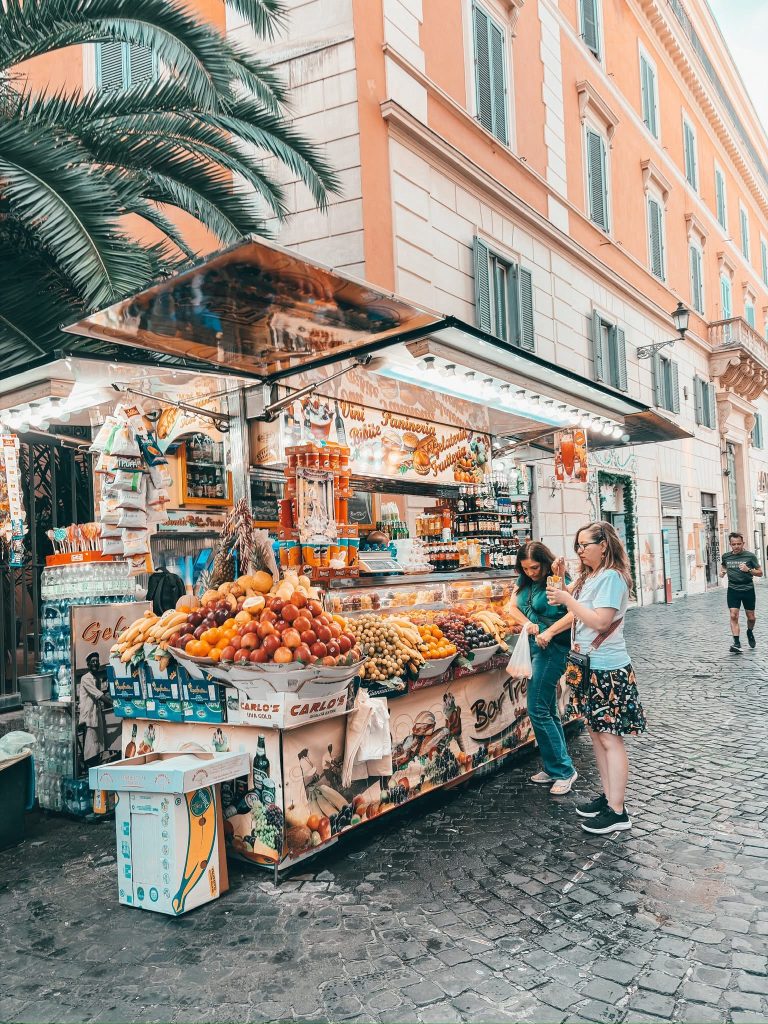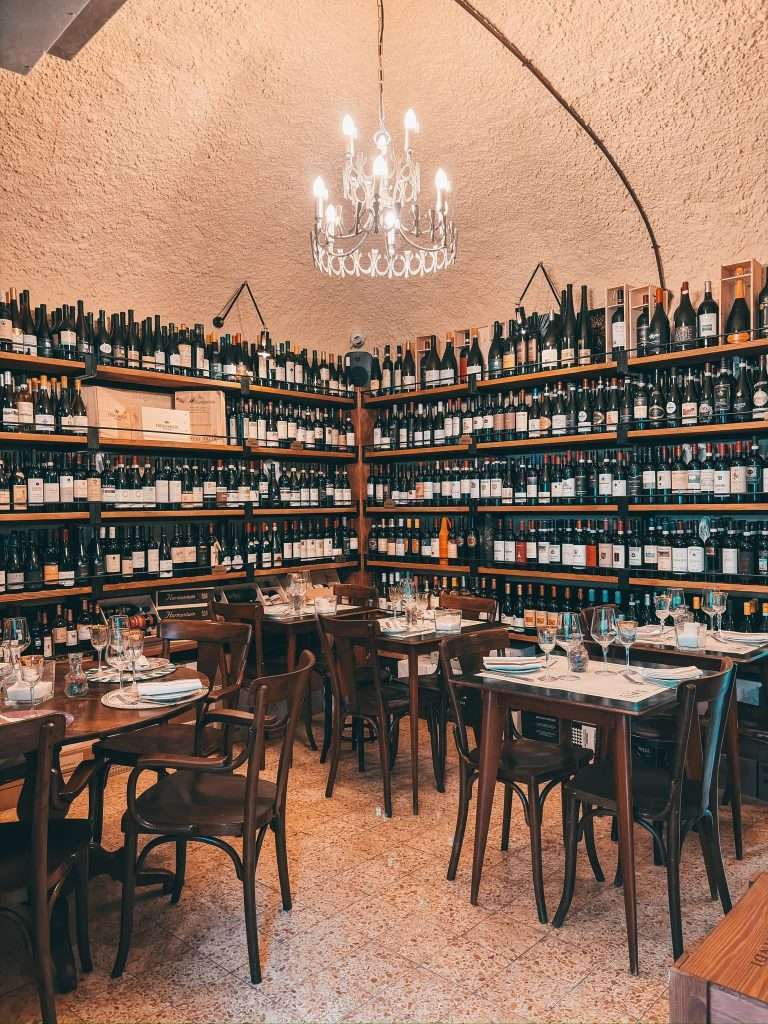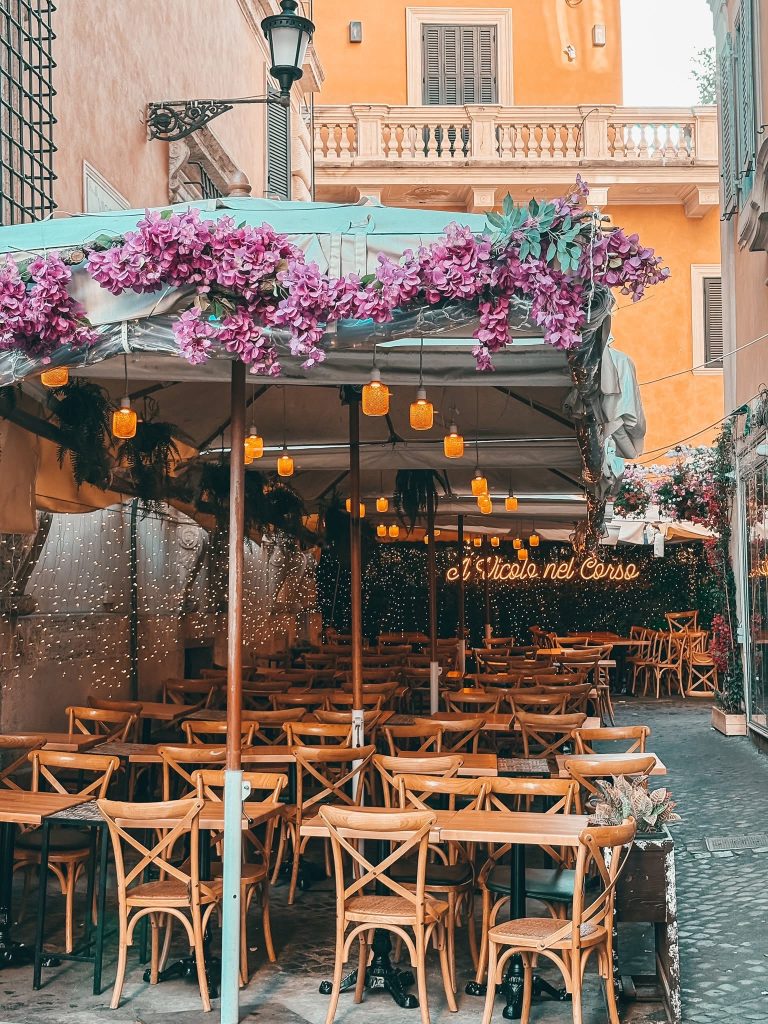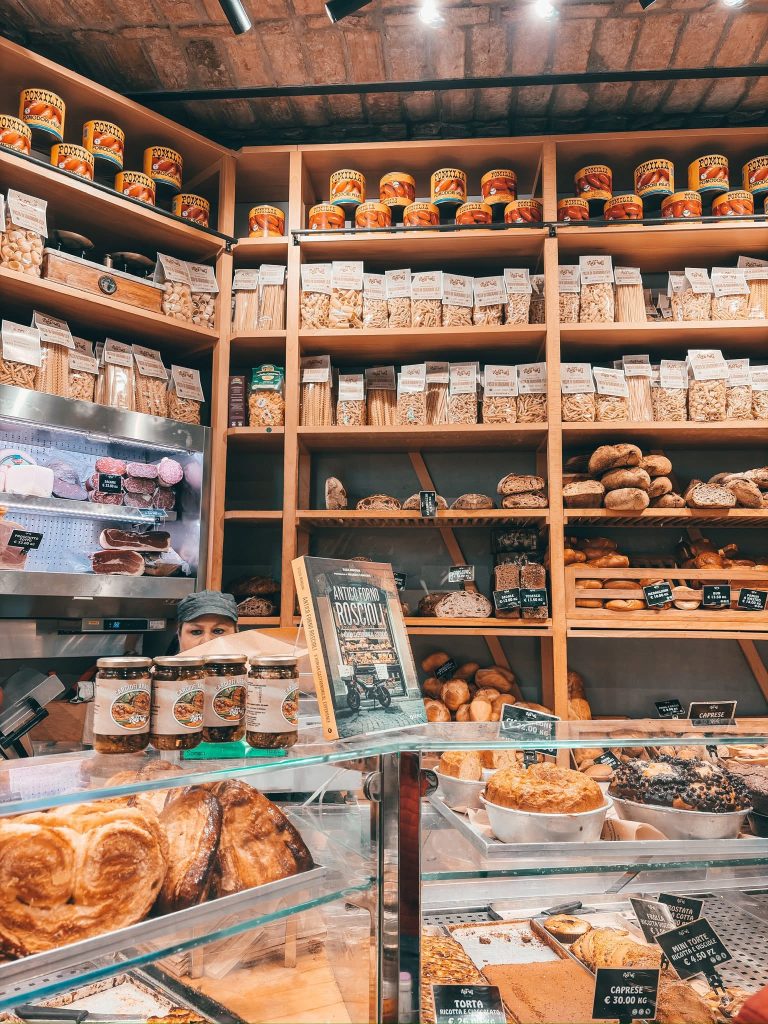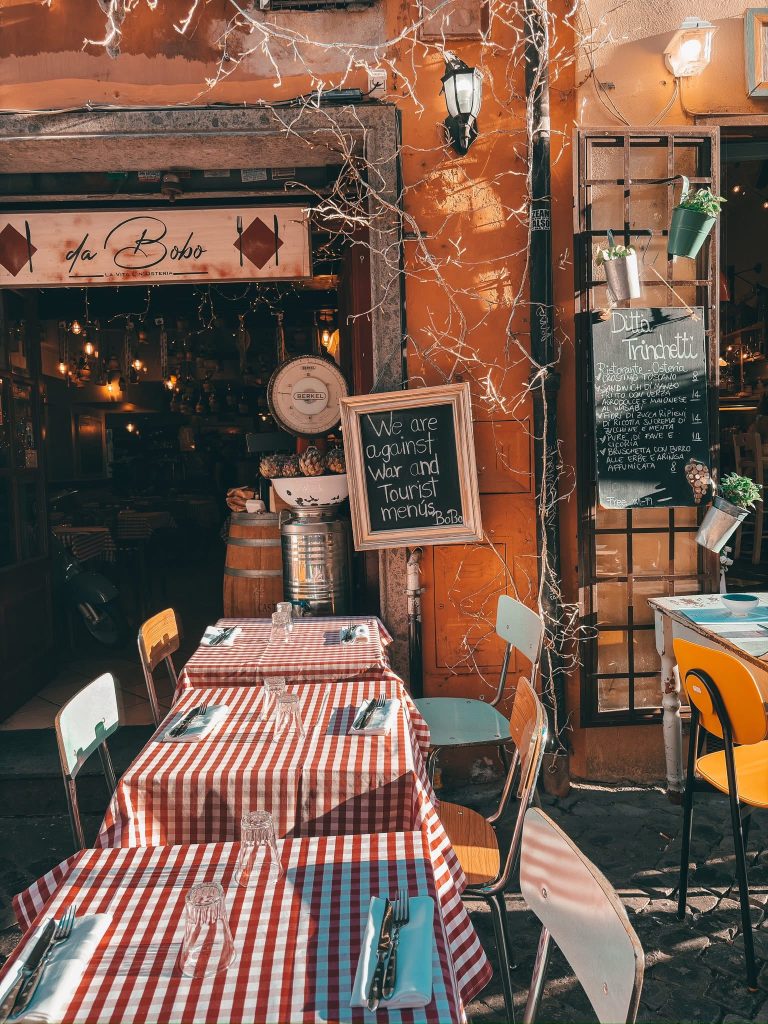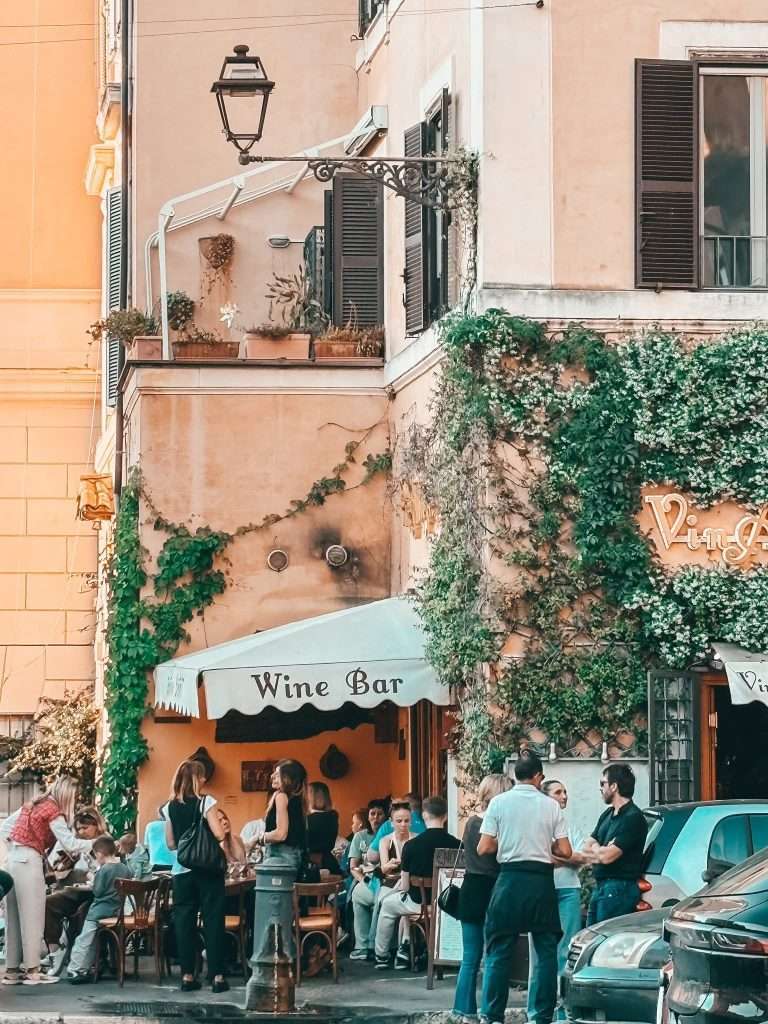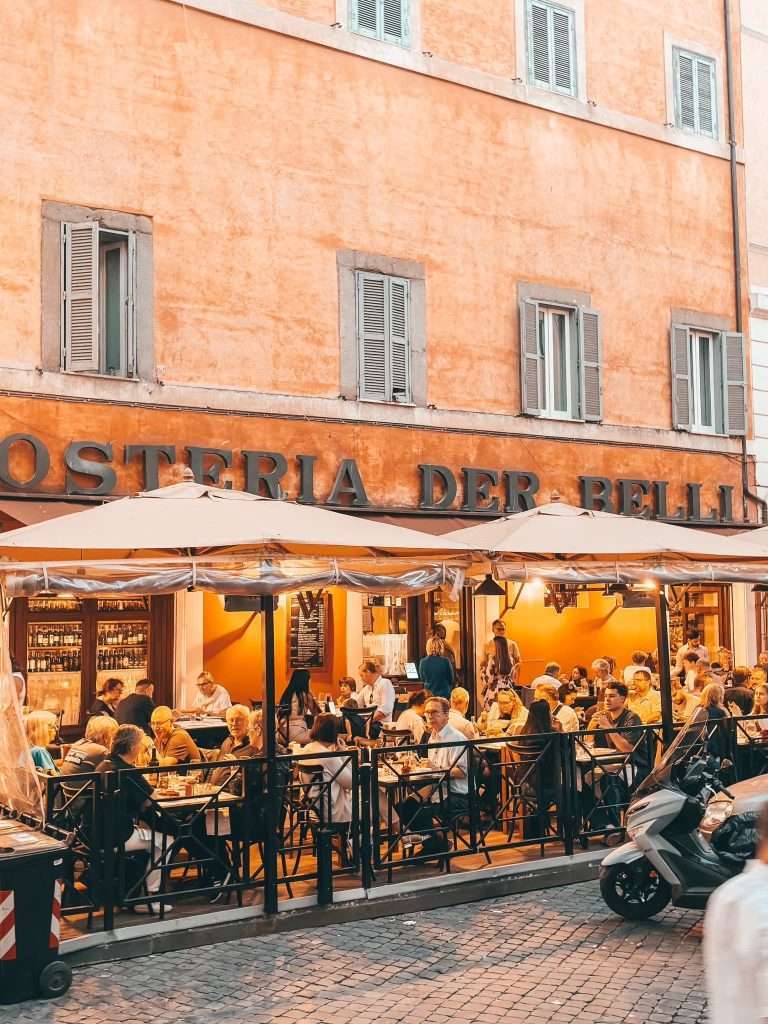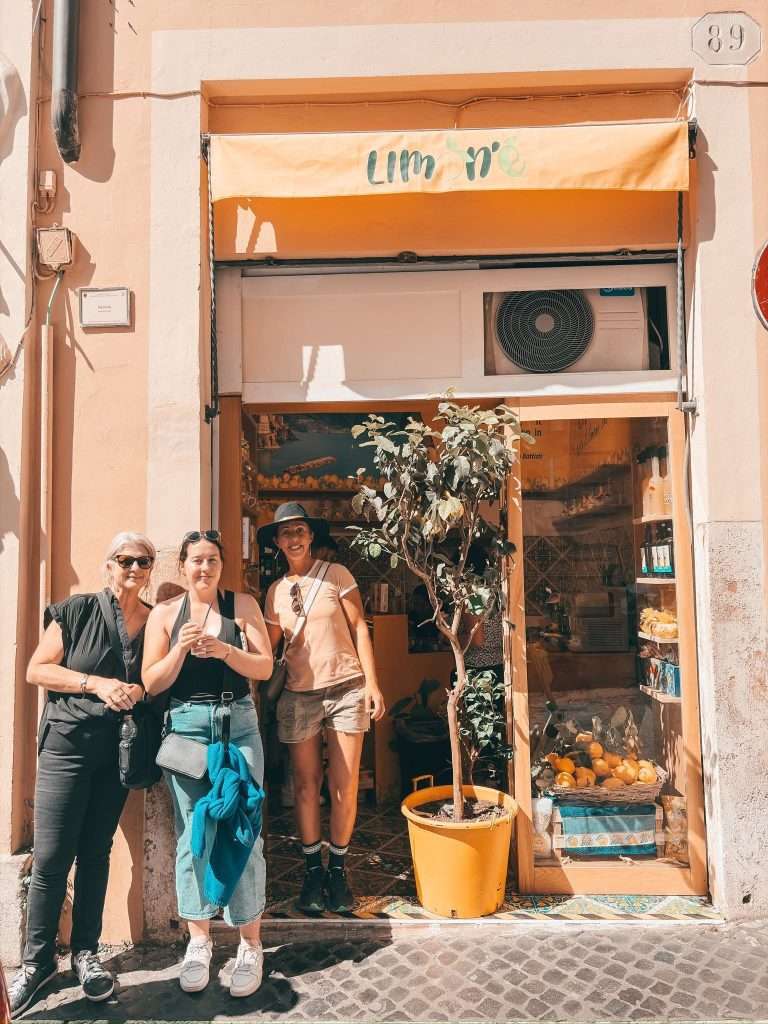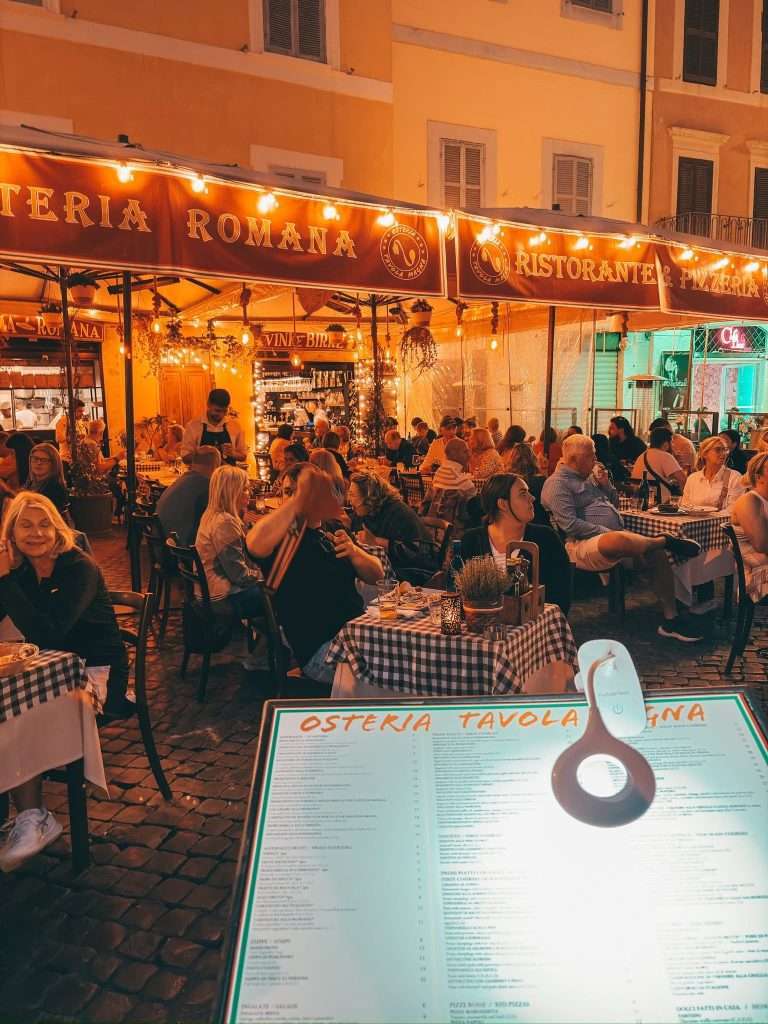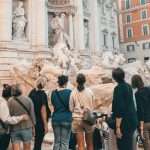In our first Roman chapter, we lingered—sharing gelato at dusk, watching the morning light dance across the Pantheon’s ancient façade, and wandering Rome’s cobbled lanes slowly, as if listening for her heartbeat. That was our prologue.
Now, Rome draws us deeper. This is where marble and memory meet, where art and empire still whisper through arches and domes. It’s a chapter that asks you not just to see Rome—but to feel her.
The Colosseum, Roman Forum & Palatine Hill – Walking the Arenas of History
The Colosseum rises in the heart of Rome, just steps from Colosseo Station on Metro Line B. From outside, it already takes your breath away. But stepping inside—that’s where Rome becomes real.
We joined a guided tour that included the Colosseum’s arena floor, the Roman Forum, and Palatine Hill. It was one of the most profound ways to experience ancient Rome.
- Arena Floor: To stand where gladiators once stood is to feel history under your skin. From this perspective, the arena spreads out like a story you’re suddenly part of. You imagine the roar, the courage, the humanity.
- Roman Forum: Once the beating heart of Rome’s politics, trade, and religion, the Forum is a scattering of columns and arches—yet with a guide, the ruins come alive. You hear about senators, orators, triumphs, and betrayals as you walk the very streets they did.
- Palatine Hill: Rising above it all, this is where emperors built their palaces. From here, Rome unfurls before you: the ancient world below, the modern city buzzing beyond. It’s a view that ties centuries together.
Why It’s Important: These three sites tell the story of power and empire, of ambition and downfall. They remind us that greatness is built—and can fade—but its echoes last forever.
Journal Prompt: “Where in my life am I being called to step into the arena, to face the crowd with courage and presence?”
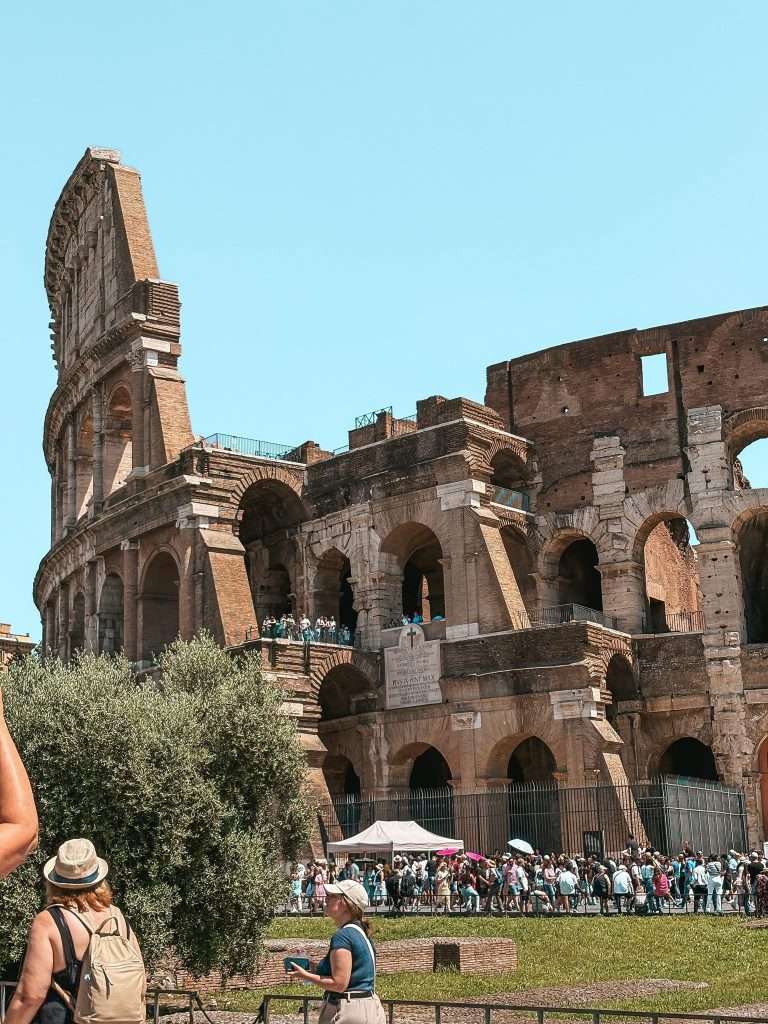
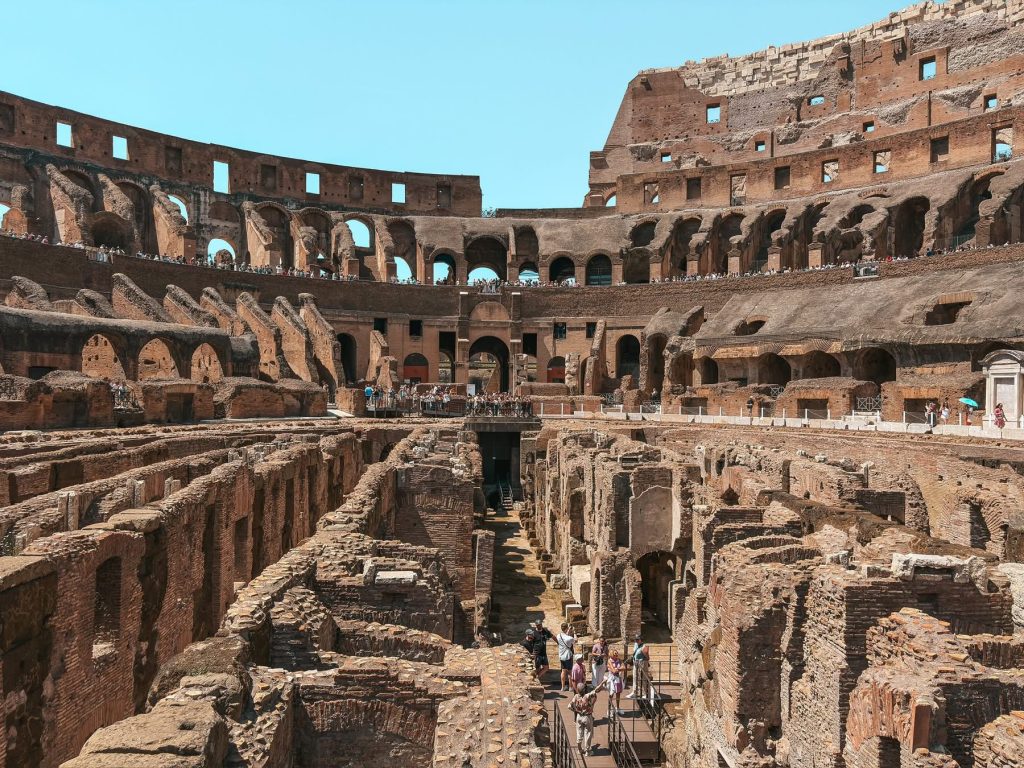
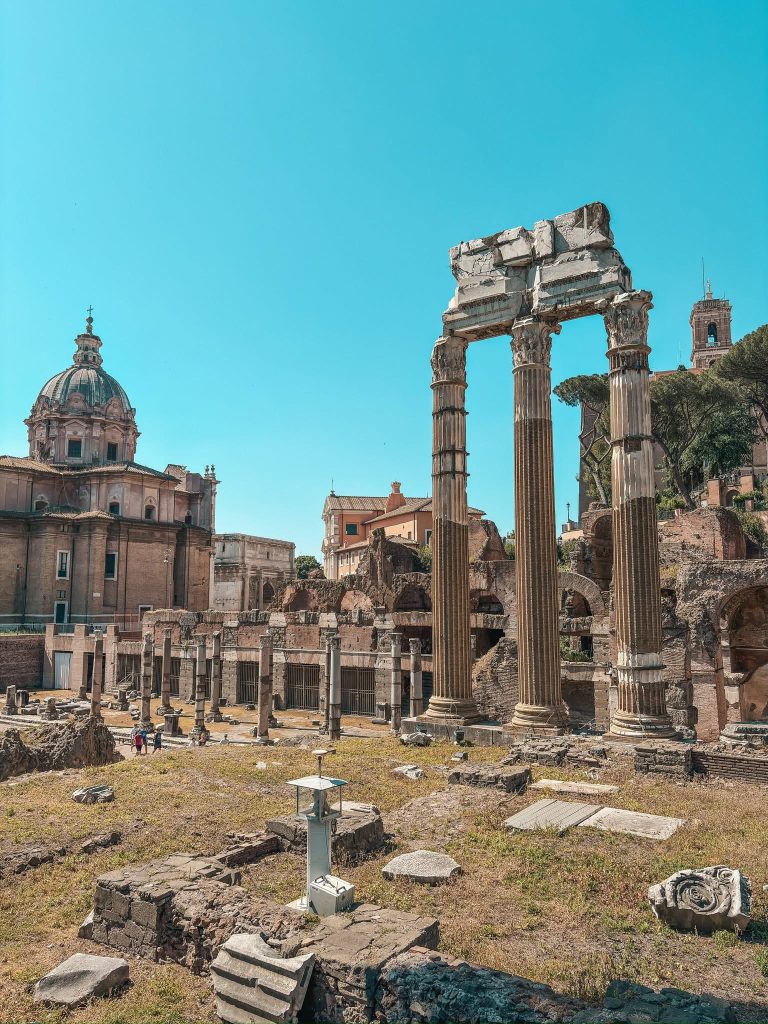
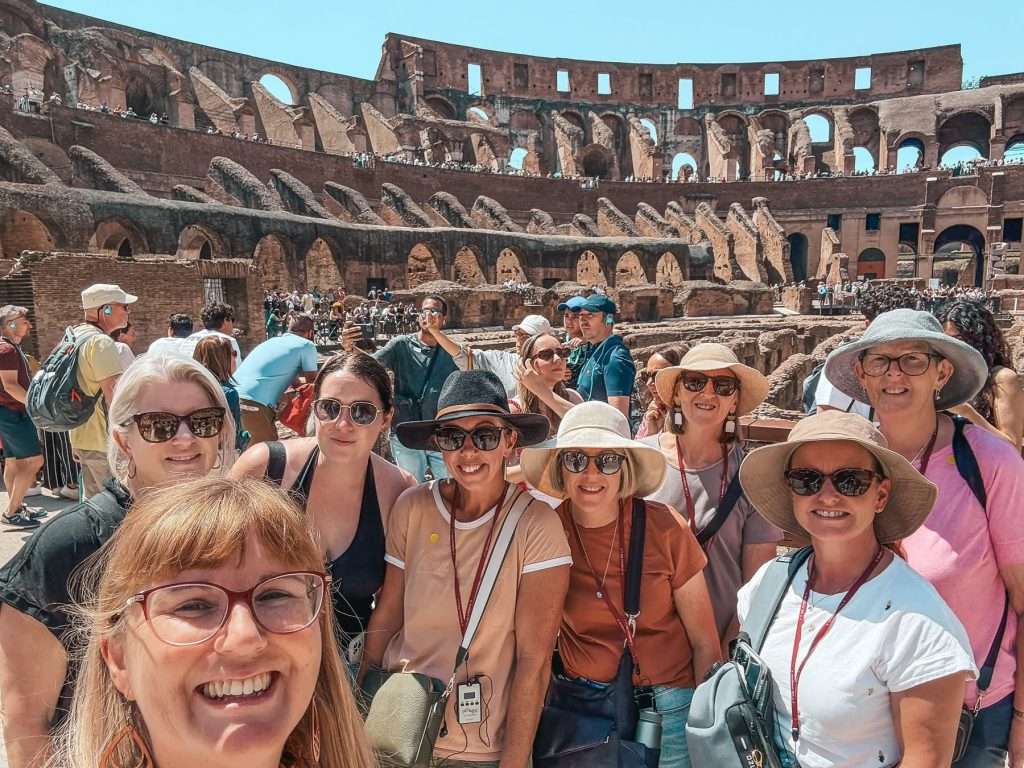
Piazza Navona – The Art of Life
If Rome had a stage where life itself performs, it would be Piazza Navona. Once an ancient Roman stadium, it’s now one of the city’s most beautiful open-air galleries—a long, elegant square framed by Baroque architecture, bustling cafés, and street artists painting scenes of the very piazza they sit in.
At its heart stands Bernini’s Fountain of the Four Rivers, a breathtaking sculpture symbolizing the great rivers of the world—the Nile, the Ganges, the Danube, and the Río de la Plata—each figure twisting and turning as if caught mid-conversation with the gods. Across from it, Borromini’s Sant’Agnese in Agone church rises gracefully, their artistic rivalry still visible in stone centuries later.
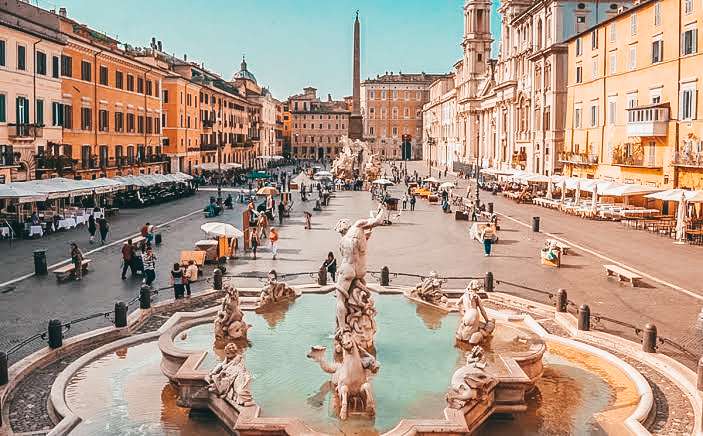
Come during the day and the piazza is alive with energy—children chasing pigeons, artists sketching, musicians filling the air with soft melody. But stay until evening, when the light softens and the fountains shimmer under golden lamps, and Piazza Navona transforms. The pace slows, laughter drifts between tables, and Rome reveals her romantic side.
Tip: Stop at one of the small cafés for an espresso or gelato, but wander just a block or two away for better prices and more local flavour. Visit around sunset for the most atmospheric experience.
Getting there: Piazza Navona lies just west of the Pantheon and a short walk from Campo de’ Fiori—easily reached on foot from most central Rome hotels.
✨ Journal Prompt: What does “la dolce vita”—the sweet life—mean to me right now? And how can I invite more of that simple joy into my everyday world?
The Vatican – A World Within Walls
The Vatican isn’t just about art—it’s about awe. Tucked on the western side of the Tiber, it’s accessible by Metro (Line A to Ottaviano station) or a leisurely walk from central Rome.
We joined a small-group early access tour of the Vatican Museums, and it was the best choice. Walking into those grand halls before the crowds arrive is like being given a private audience with history itself.
- Vatican Museums: Galleries of ancient maps, tapestries, and sculptures prepare you for what’s to come. Don’t rush—notice the tiny details, the brushstrokes, the mosaics underfoot.
- The Sistine Chapel: Michelangelo’s ceiling stretches above like a painted sky. But Rome reminded us that not everything goes to plan: when we visited, the Chapel was closed to the public as a new Pope had just been elected. We stood in line for hours for St. Peter’s Basilica, only to be told it was closing too. And yet—that’s travel. History was unfolding before us, and we embraced it, knowing that Rome always offers more.
- St. Peter’s Basilica: When open, it’s a place that stops you in your tracks. The scale is immense, but so is the feeling of being small in the presence of something greater. Climb the dome if you can—Rome spreads beneath you in golden glory.
Why It’s Important: The Vatican is the soul of Rome’s spiritual story. Even if you’re not religious, the art, history, and human achievement here move you deeply.
Journal Prompt: “When life doesn’t go as planned, how can I shift my perspective to see what’s unfolding as part of a bigger story?”
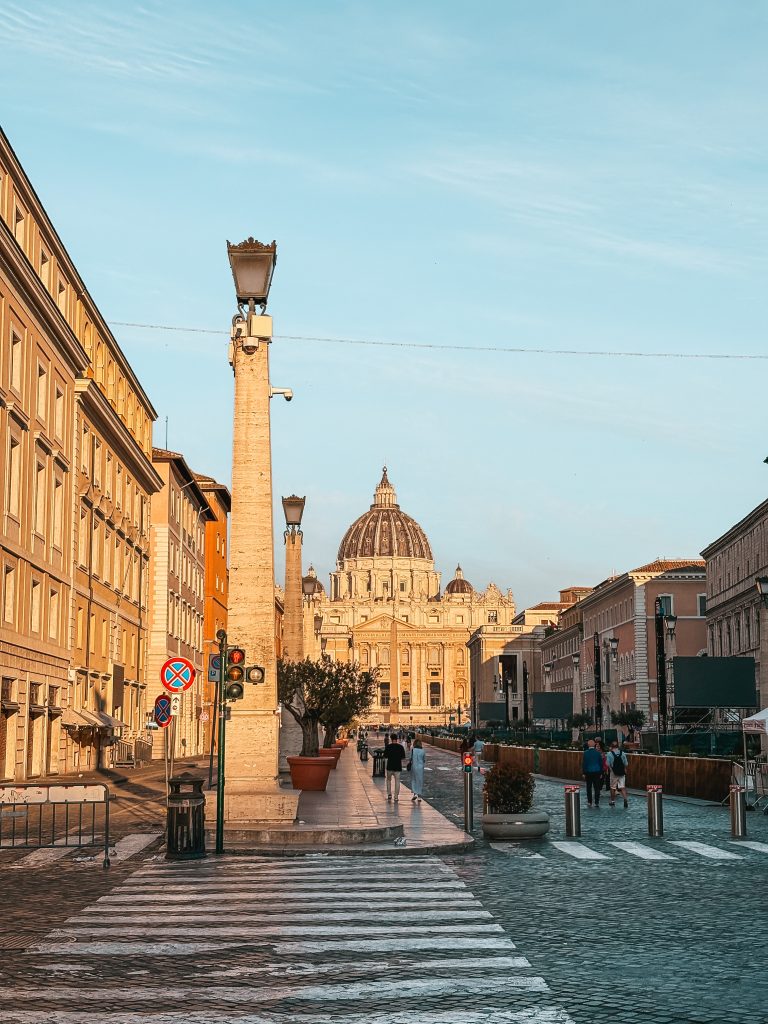
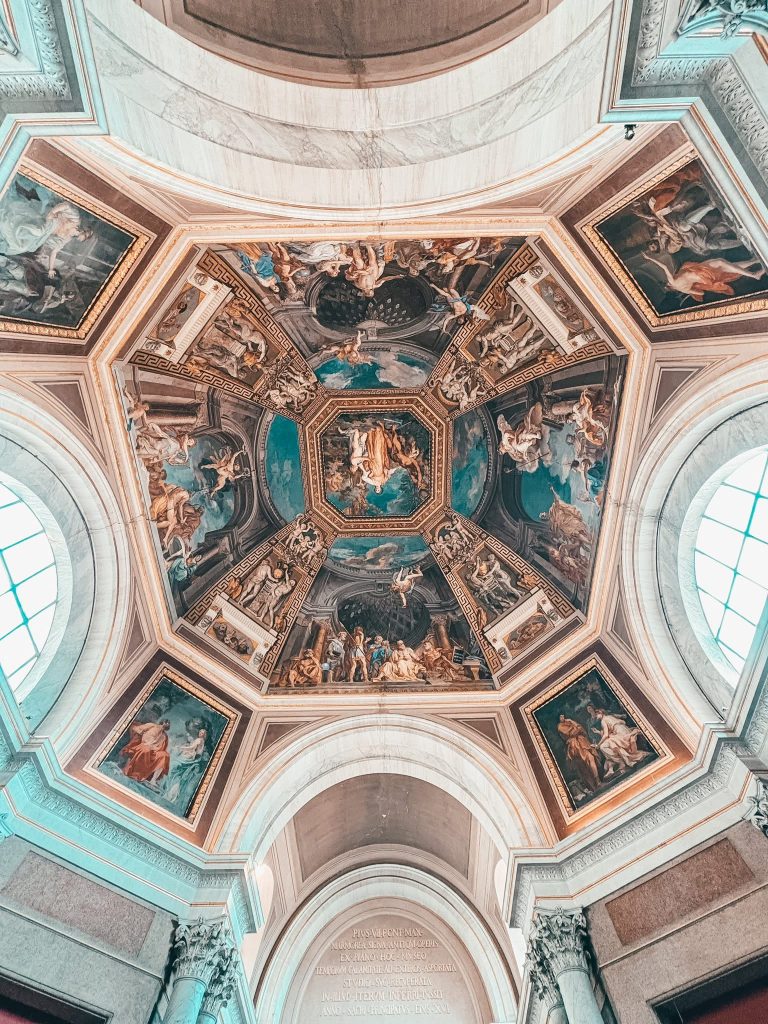
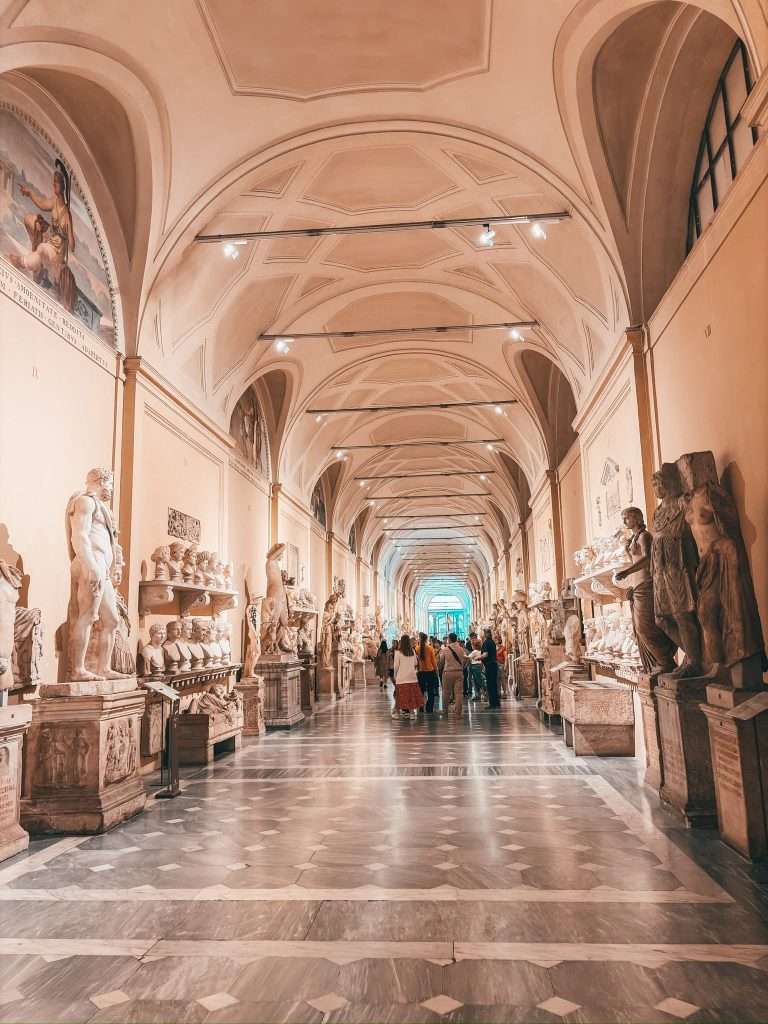
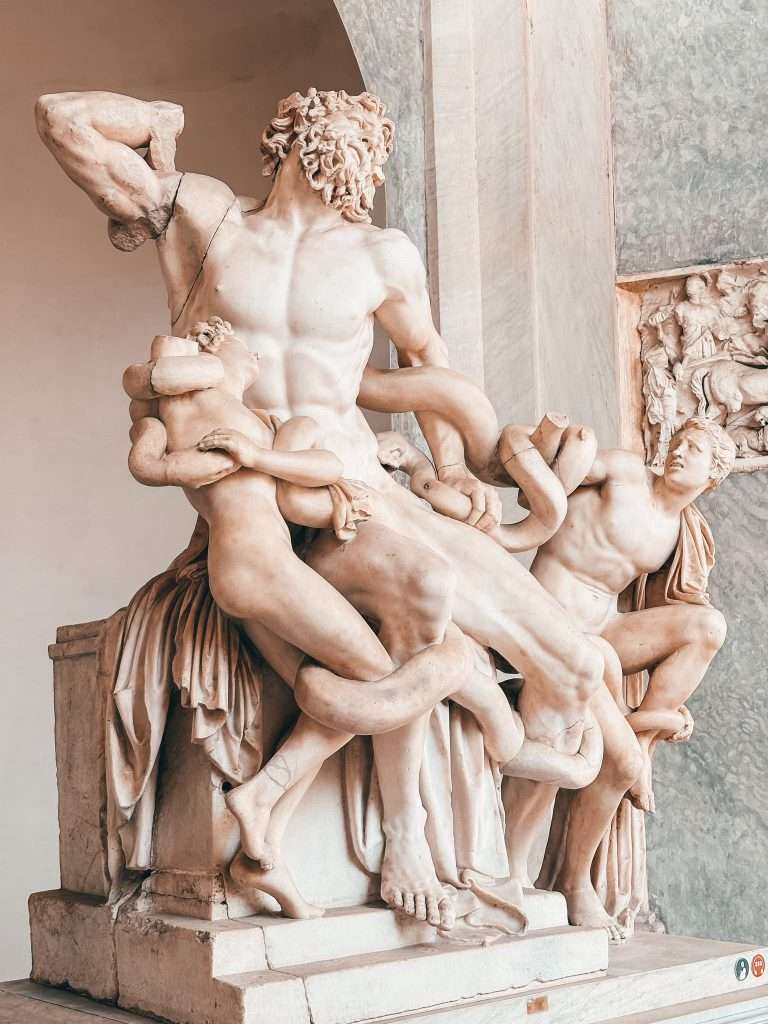
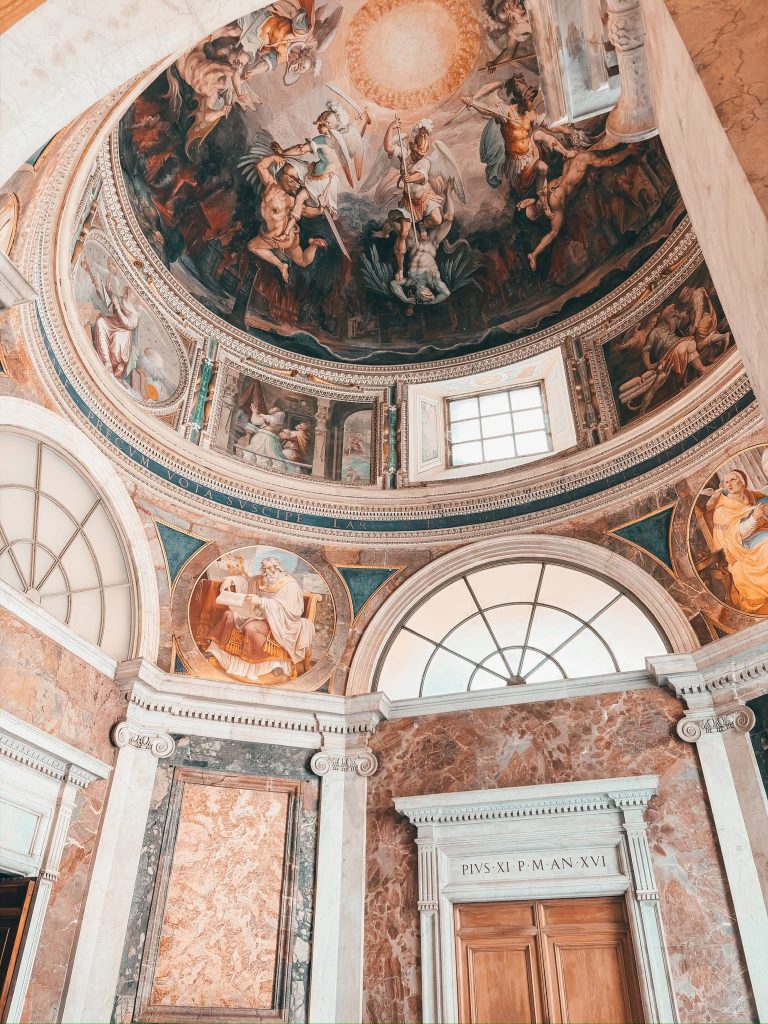
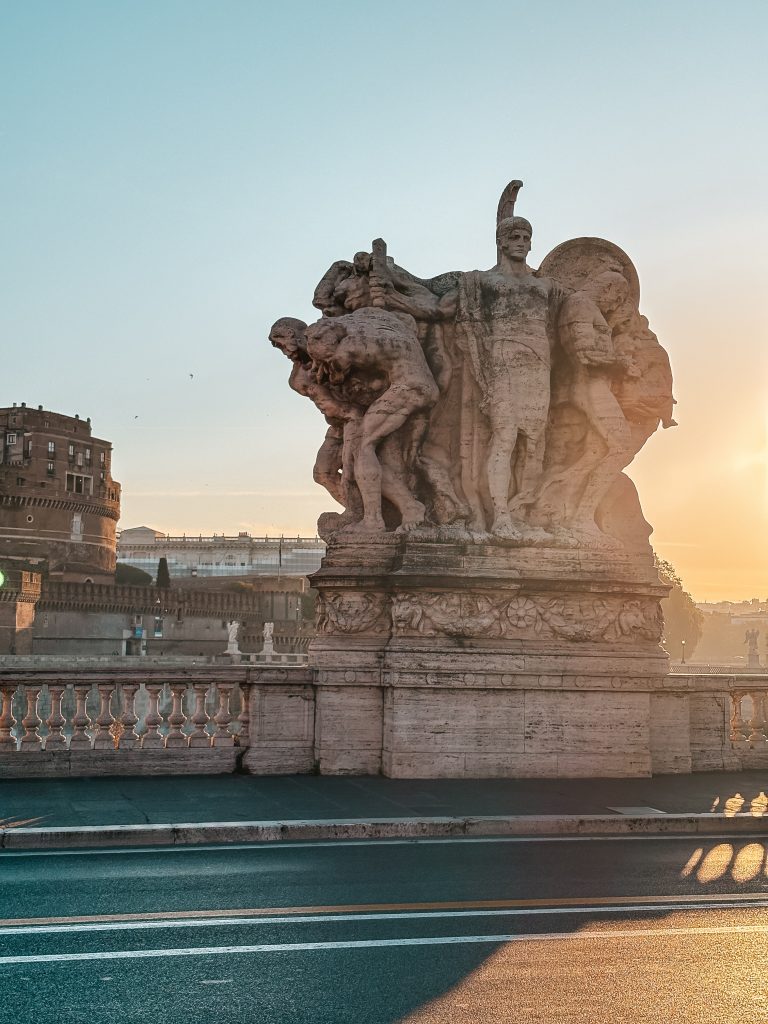
The Pantheon – Where the Heavens Touch Earth
In Piazza della Rotonda, surrounded by bustling cafés, sits the Pantheon—a temple nearly 2,000 years old. You can walk here easily from Campo de’ Fiori, Piazza Navona, or the Trevi Fountain, weaving through Rome’s cobbled streets.
Step inside, and notice the silence. Look up at the oculus—the circular opening in the dome that lets in sunlight, rain, even snow. Time doesn’t seem to matter here. You’re standing in a place where emperors and saints alike once stood.
Special Tip: Visit twice—once at dawn, when it’s quiet, and again at midday when the sun cuts directly through the oculus, casting a glowing circle across the marble floor.
Journal Prompt: “If the universe could shine its light into my life today, what space within me is ready to be illuminated?”
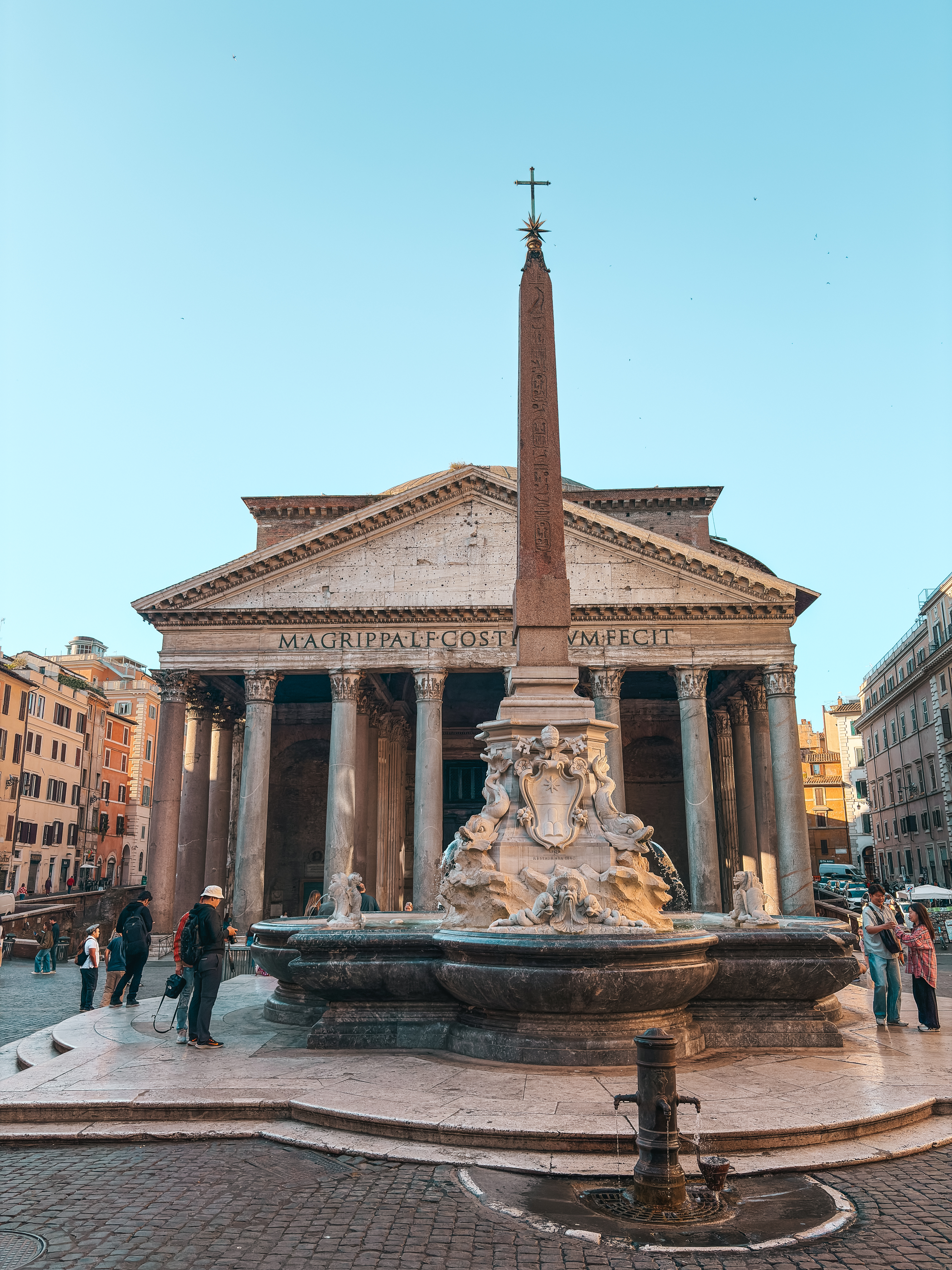
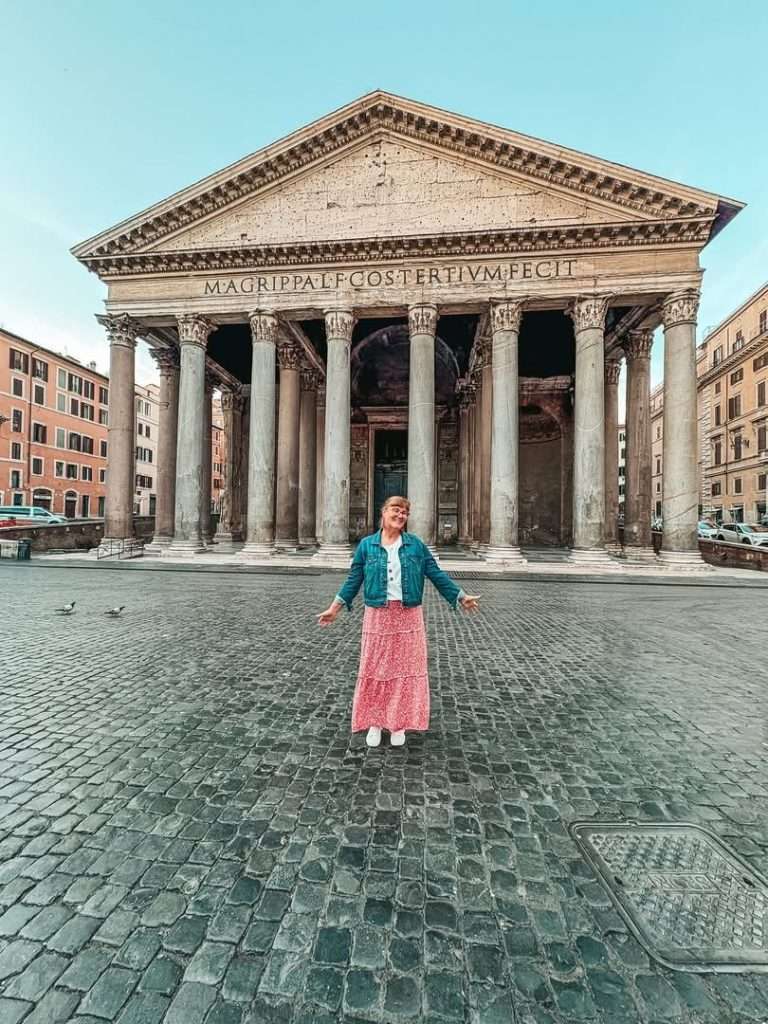
The Trevi Fountain – The Eternal Wish
Tucked in a small piazza near the Quirinale, the Trevi Fountain often surprises you by how suddenly it appears. One moment you’re weaving through narrow lanes, the next, you hear it—the unmistakable rush of water, pulling you closer before you even catch sight of the marble masterpiece ahead.
Yes, it’s crowded—Rome’s heartbeat seems to gather here. But there are two times the Trevi belongs only to dreamers: before the city wakes and after it falls asleep.
Go early, just before sunrise, when the light is soft and golden. The shop shutters are still down, the air smells faintly of espresso and fresh bread, and the fountain sings only for you. You can sit at its edge and watch the city yawn awake, reflections of morning light dancing across the water.
Or go near midnight, when the crowds thin and the marble glows under lamplight. There’s a hush in the air, a kind of reverence. Toss your coin over your shoulder then—not as a tourist, but as a pilgrim of your own story.
Unique Tip: If you can, join an evening walking tour that weaves the Trevi Fountain with Piazza Navona and Campo de’ Fiori. Seeing these landmarks bathed in moonlight feels like stepping into another realm—Rome at her most romantic, mysterious, and alive.
✨ Journal Prompt: If I toss a coin into my own fountain of dreams, what am I truly wishing for—with all my heart? And am I ready to believe it can come true?
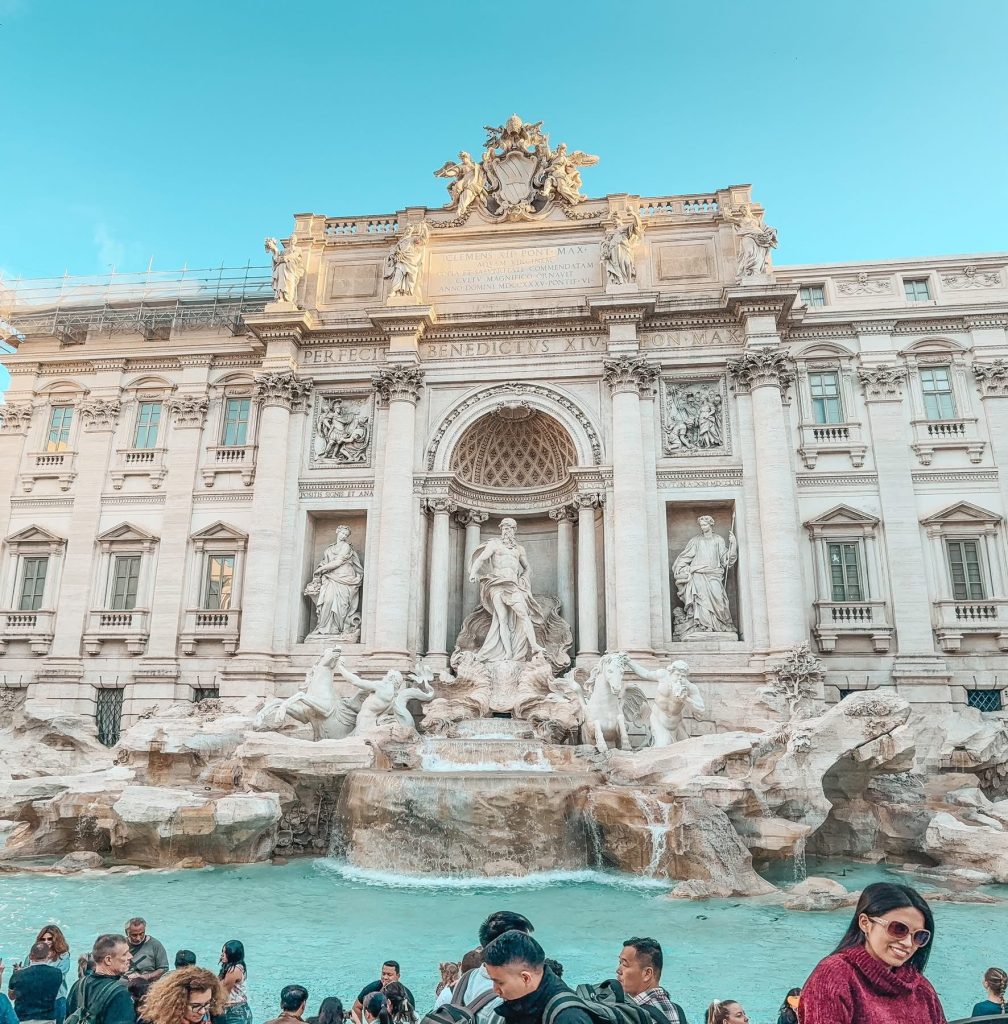
Flavours of Rome – Eat Like a Local
Rome is not just seen—it’s tasted. Every corner hides something delicious. Beyond trattorias and rooftop bars, the city’s street food offers bites you’ll dream of long after you’ve left:
- Supplì: My personal favorite—crispy fried rice balls filled with mozzarella that stretches with every bite. Found only in this region, they’re the perfect Roman comfort food.
- Pizza al Taglio: Square slices, cut with scissors, sold by weight. Try it at Bonci Pizzarium near the Vatican.
- Trapizzino: A pizza pocket filled with Roman classics like chicken cacciatore or eggplant parmigiana.
- Two Sizes : Imagine delicious combinations like Pistachio and Caramel Tiramisu in a small cup. So YUM
- Carciofi alla Giudia: Fried Jewish-style artichokes, especially in the Jewish Quarter.
- Gelato in Hollowed Lemons: For something unforgettable, head to Limone shops—where lemon and basil gelato is served inside hollowed lemons. The freshness is unmatched, and it feels like summer melting in your hands.
✨ Journal Prompt: Each bite carries a story of culture and place. How do I savour the everyday moments in my own life the way I savour a Roman street snack?

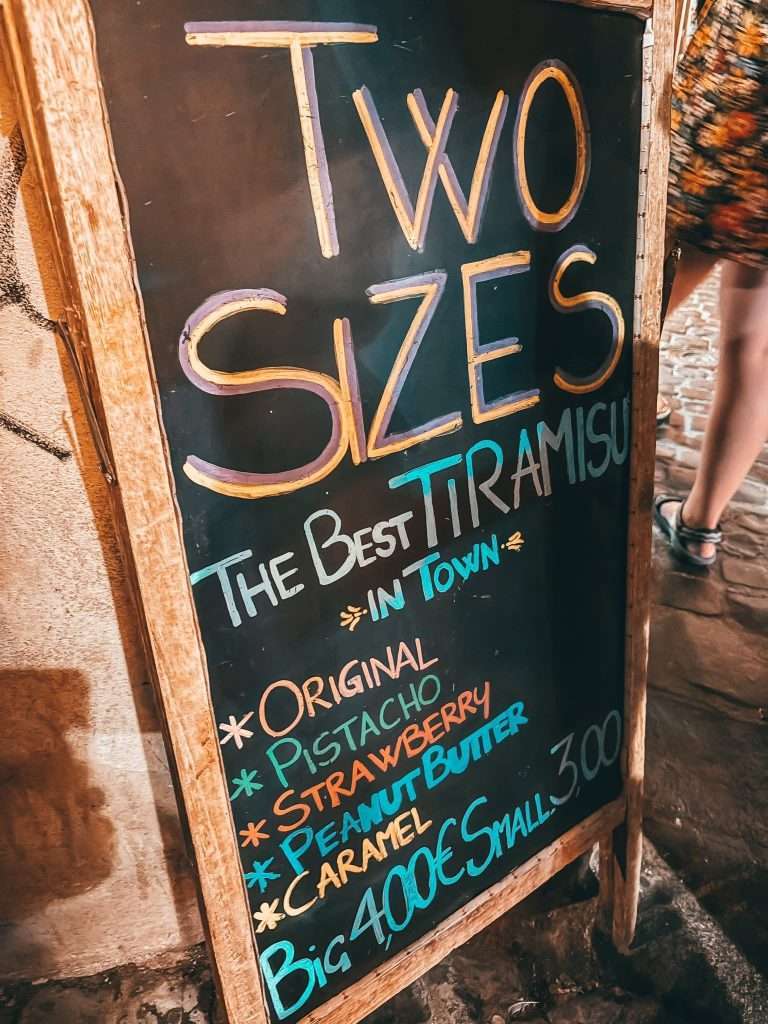
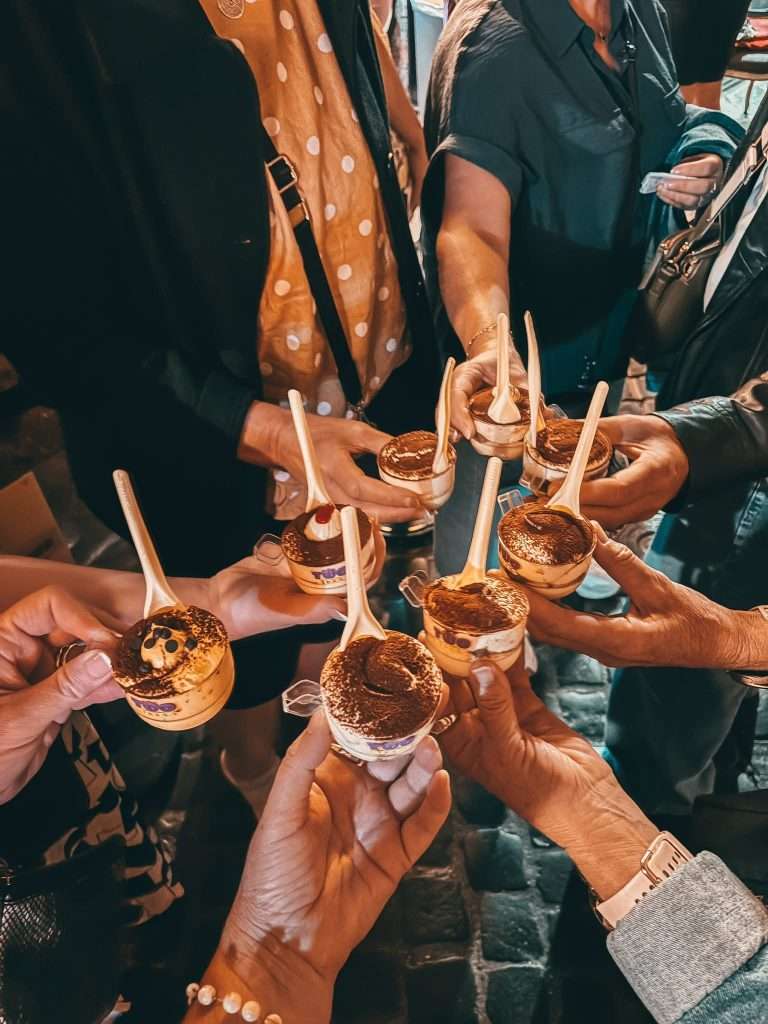
Travel Tips for Experiencing Rome Fully
- Slow down. Don’t try to conquer Rome in one trip. Pause on a marble bench, let the sun warm your shoulders, and simply watch life pass.
- Book tours in advance. The Colosseum arena floor and Vatican early entry sell out quickly.
- Stay central. From Hotel Ponte Sisto, we could walk everywhere—Rome is best discovered on foot.
- Embrace the unexpected. When doors close (literally), notice what opens instead. That’s the soul of travel.
🏛 Practical Travel Guide to Rome
So, Best Time to Visit:
- Spring (April–June) and Autumn (September–October) offer warm weather, fewer crowds, and beautiful light for photography.
- Summer can be hot and crowded, but evenings are magical with piazzas buzzing late into the night.
- Winter is quieter, with fewer tourists and a more intimate feel—perfect for lingering in museums and cafés.
Getting Around:
- Rome is a city best explored on foot.
- Use the Metro (Lines A & B) for longer distances (e.g., Colosseo, Ottaviano for the Vatican).
- Taxis are available but ensure they’re official white ones with a meter.
- Comfortable walking shoes are essential—cobblestones can be unforgiving! Know your muscles will be sore for a couple of days while you get use to the cobblestones.
Must-Book Tours (Highly Recommended):
- Colosseum Arena Floor, Forum & Palatine Hill Guided Tour – Stand where gladiators once fought and learn the stories of emperors and daily Roman life.
- Early Vatican Museum & Sistine Chapel Small-Group Tour – Beat the crowds and see priceless treasures before the doors fully open. (Even if history rewrites your plans, the experience is unforgettable.)
- St. Peter’s Basilica Dome Climb – For breathtaking views over Rome and the Vatican.
- Food & Wine Walking Tour in Trastevere – Taste authentic Roman specialties in one of the city’s most atmospheric neighborhoods.
Hidden Gems to Add:
- Campo de’ Fiori Market in the morning for flowers, spices, and local flavors.
- Giardino degli Aranci (Orange Garden) for one of the most romantic sunset views over St. Peter’s.
- Via Margutta – A quiet street once home to artists, now lined with galleries and ivy-clad houses.
Dress Codes & Etiquette:
- Modest dress is required in religious sites (cover shoulders and knees). Carry a lightweight scarf for convenience.
- Gelato etiquette: choose wisely—avoid shops with neon colors and towering displays. True gelato melts quickly and is stored in covered metal tubs.
Where to Eat (A Few Favorites):
- Da Enzo al 29 (Trastevere): Family-run trattoria with unforgettable carbonara.
- Roscioli: A mix of deli, wine bar, and restaurant—perfect for cacio e pepe.
- Tonnarello : Is the kind of place that has the spirit of Trastevere. Plates piled high with fresh pasta.
- Taverna 51 : a local vibe that makes you feel like you’ve stepped in to a friend kitchen.
- Osteria Der Belli : a touch of Sardinia sunshine in Trastevere, serving beautiful seafood and homemade pasta.
- Osteria Tavola Magna : Candlelit atmosphere with the best Butter and Sage Ravioli.
- Bonci Pizzarium: For pizza al taglio near the Vatican.
- Gelateria del Teatro: Creative gelato flavors like sage & raspberry or rosemary & honey.
- Limone Shops: For the iconic lemon & basil gelato in hollowed lemons.
Quick Packing Tip:
Bring a refillable water bottle. Rome’s nasoni fountains provide fresh, drinkable water throughout the city—eco-friendly and refreshing!
So, thanks for joining us as we discovered Rome, keep an eye out for our next blog coming soon where we stop in Tuscany, Italy.
If you missed the beginning of our Roman Journey, wander back to Rome: Where the Journey Begins — our first instalment filled with sunrise strolls, quiet rituals, and the gentle rhythm of settling into Hotel Ponte Sisto.
